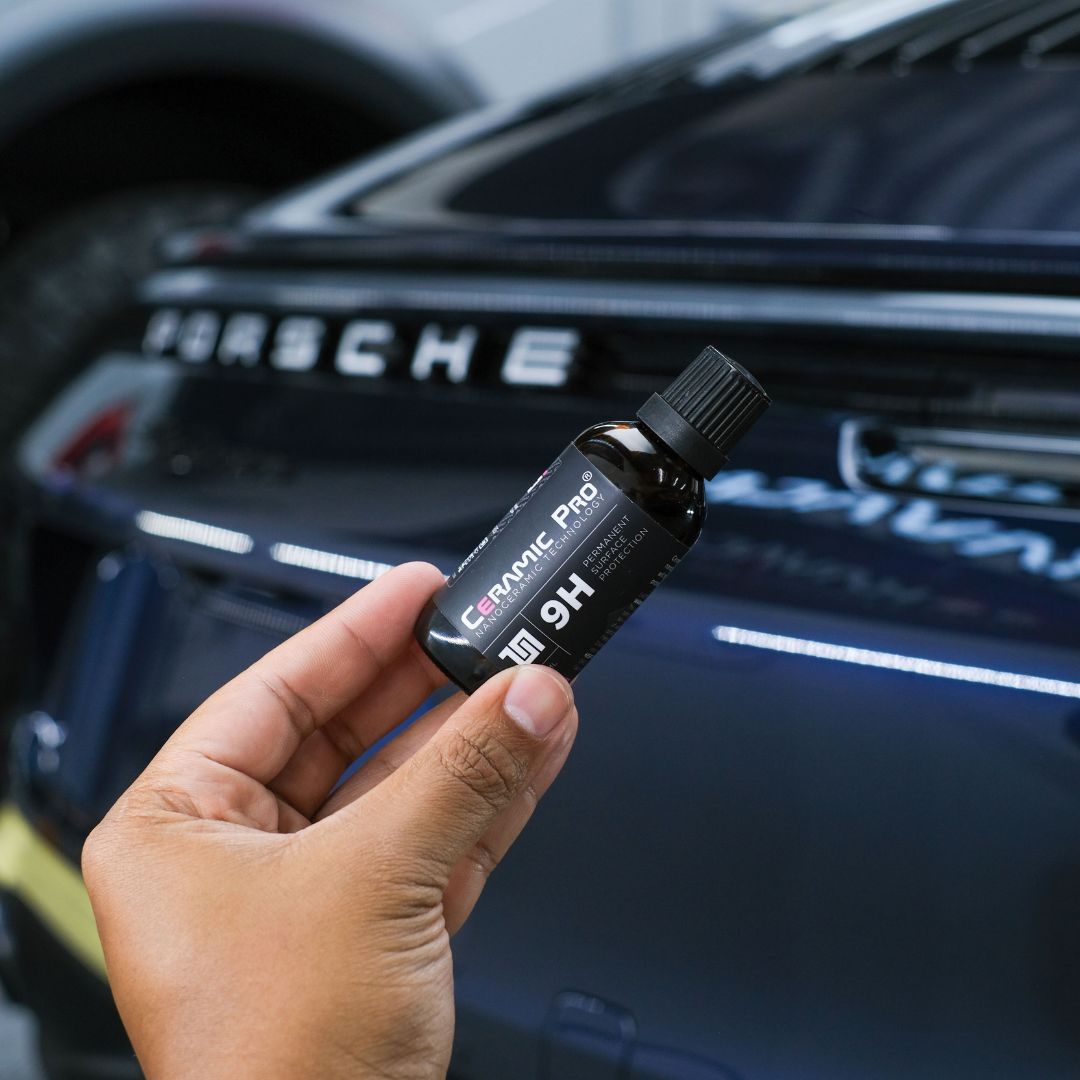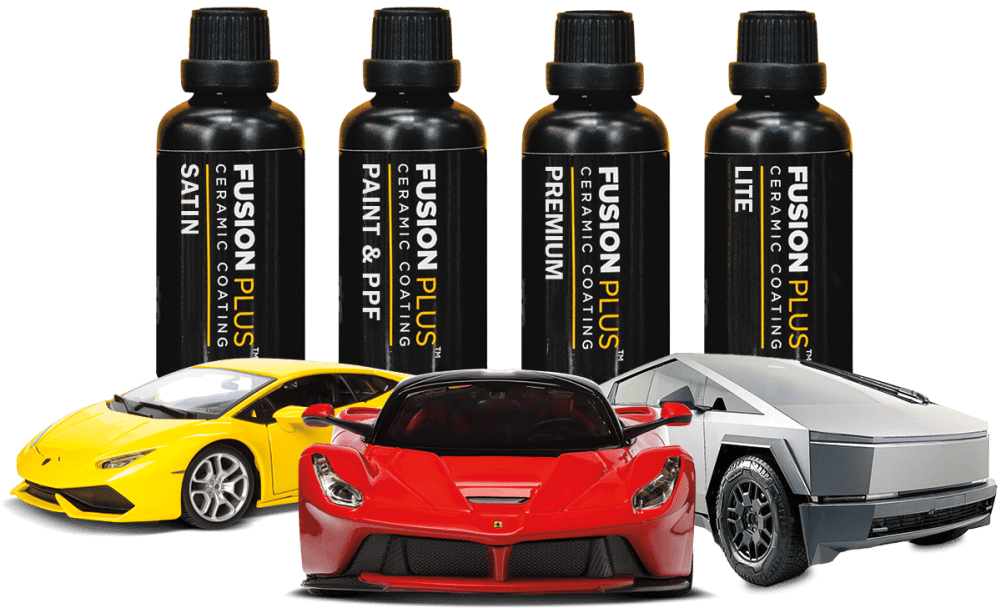Experience Ceramic Pro: Unmatched Defense for Your Vehicle's Paint
Experience Ceramic Pro: Unmatched Defense for Your Vehicle's Paint
Blog Article
The Scientific Research Behind Ceramic Finishing: Exactly How It Boosts Your Car's Visual and Longevity

Recognizing Ceramic Layer Chemistry
The chemical make-up of ceramic layers plays an important duty in identifying their sturdiness and protective residential properties on car surfaces. Ceramic coatings are typically composed of silicon dioxide (SiO2), which is a primary part giving hardness and heat resistance. Various other active ingredients such as titanium dioxide, silicon carbide, and polysilazanes are usually included in improve details buildings like UV adhesion, hydrophobicity, and resistance.
Silicon dioxide, additionally referred to as silica, forms a clear and strong layer on the car surface when used correctly. This layer works as a shield, protecting the paint from ecological contaminants, UV rays, oxidation, and chemical spots. Titanium dioxide helps in blocking harmful UV rays that can trigger paint fading and damage. Silicon carbide is recognized for its abrasion resistance, making the ceramic finishing difficult and long lasting versus physical damage. Polysilazanes are used to enhance the finish's flexibility and bond to the vehicle's surface, making sure durable defense. Understanding the chemistry behind ceramic finishes is vital for both applicators and vehicle owners to appreciate the value and benefits these finishings provide in preserving the aesthetic allure and long life of vehicles.
Enhanced Gloss and Mirror-like End Up
Recognizing the chemical structure of ceramic finishes not just exposes their protective buildings however additionally clarifies exactly how they contribute to attaining an improved gloss and mirror-like finish on car surfaces. The secret to the glossy impact depends on the nano-ceramic fragments existing in the finish. These particles complete microscopic pores and blemishes on the surface area, creating a smooth and degree coating. As light hits the covered surface area, it reflects uniformly, giving the look of a deep, glossy luster. Additionally, the chemical framework of ceramic finishings allows them to create a strong bond with the automobile's paintwork, preventing oxidation and keeping the clarity of the surface with time. This bond additionally stands up to ecological contaminants, such as dirt and gunk, that can dull the shine of the automobile. The mix of filling up residential properties, light reflection, and long-lasting security makes ceramic finishes a popular choice for those seeking a dynamic and mirror-like finish for their automobiles.

Impact on Paint Protection and Long Life
Ceramic finishings for vehicles considerably enhance the longevity and security of the paintwork. By creating a chemically resistant layer on top of the vehicle's clear coat, ceramic coatings act as an obstacle against different environmental pollutants that can damage the paint over time.
In regards to long life, ceramic finishings supply a resilient remedy compared to standard waxes or sealers. While waxes may last a few weeks to a couple of months, ceramic coverings can in 2014 with proper maintenance. This extensive life-span not just reduces the regularity of reapplications however likewise saves effort and time in the future. Overall, the safety residential properties of ceramic coverings contribute significantly to preserving the car's paintwork and improving its visual allure over an extended duration.
Resistance to Contaminants and Severe Components
With the protective shield offered by ceramic finishings against various environmental contaminants and aspects, automobiles are able to preserve their beautiful appearance despite exposure to extreme problems. Ceramic layers create a solid obstacle that drives away water, dust, dust, and various other usual contaminants, avoiding them from bonding to the car's surface. This hydrophobic nature not just makes cleansing much easier however additionally minimizes the danger of water spots and etching triggered by acidic pollutants. Furthermore, the chemical resistance of ceramic coverings helps secure the paint from bird droppings, insect splatter, tree sap, and other harsh compounds that can harm the surface over time.
Moreover, ceramic finishings supply UV protection, protecting the lorry's paint from the sun's unsafe rays that can cause fading and oxidation. This resistance to UV damage assists keep the shade intensity and shine of the paint for longer durations. By developing a resilient and sturdy barrier, ceramic finishes ensure that the automobile's outside continues to be shielded versus a variety of contaminants and severe aspects, protecting its aesthetic charm and longevity.
Application Techniques and Upkeep Tips
For ideal results when using ceramic finishings to cars, making use of appropriate techniques and sticking to recommended upkeep methods are important. The application process of ceramic coating calls for attention to Bonuses information and precision. Prior to applying the ceramic coating, it is vital to completely tidy and decontaminate the vehicle's surface area to ensure correct adhesion. This involves washing, claying, and possibly brightening the paint to create a smooth canvas for the ceramic finish to bond efficiently.
When using the ceramic covering, it is recommended to function in tiny sections to guarantee also insurance coverage and to avoid the item from drying too quickly. Utilizing applicator pads or microfiber cloths, use the coating in a crisscross or up-and-down motion, depending upon the item's directions. After the layer is used, allow it to heal for the specified time before buffing off any type of residue.
In terms of maintenance, regular washing with pH-neutral soaps and avoiding abrasive tools or harsh chemicals will certainly aid preserve the ceramic finish's stability. Routine assessments for any type of damage or wear on the coating can also aid keep its safety residential properties gradually.

Final Thought
In verdict, ceramic layer boosts a lorry's aesthetic allure and toughness through its chemical make-up, giving a shiny finish and protecting the paint from ecological Web Site pollutants. Its resistance to rough aspects and simplicity of maintenance make it a preferred selection for auto proprietors looking to preserve the appearance of their cars. In general, ceramic coating is a medically backed remedy for preserving the appearance and long life of your car.
Understanding the chemistry behind ceramic layers is vital for both applicators and car proprietors to appreciate the value and advantages these Find Out More finishings offer in preserving the aesthetic charm and longevity of automobiles. (ceramic pro)
Recognizing the chemical composition of ceramic layers not only discloses their protective residential or commercial properties yet likewise drops light on how they contribute to attaining an improved gloss and mirror-like coating on vehicle surface areas. By creating a chemically resistant layer on top of the vehicle's clear layer, ceramic coatings act as a barrier versus numerous environmental pollutants that can harm the paint over time. In general, the protective properties of ceramic finishes add substantially to maintaining the vehicle's paintwork and improving its visual allure over an extended period.
In verdict, ceramic coating enhances an automobile's visual allure and resilience through its chemical structure, supplying a shiny coating and shielding the paint from environmental contaminants.
Report this page